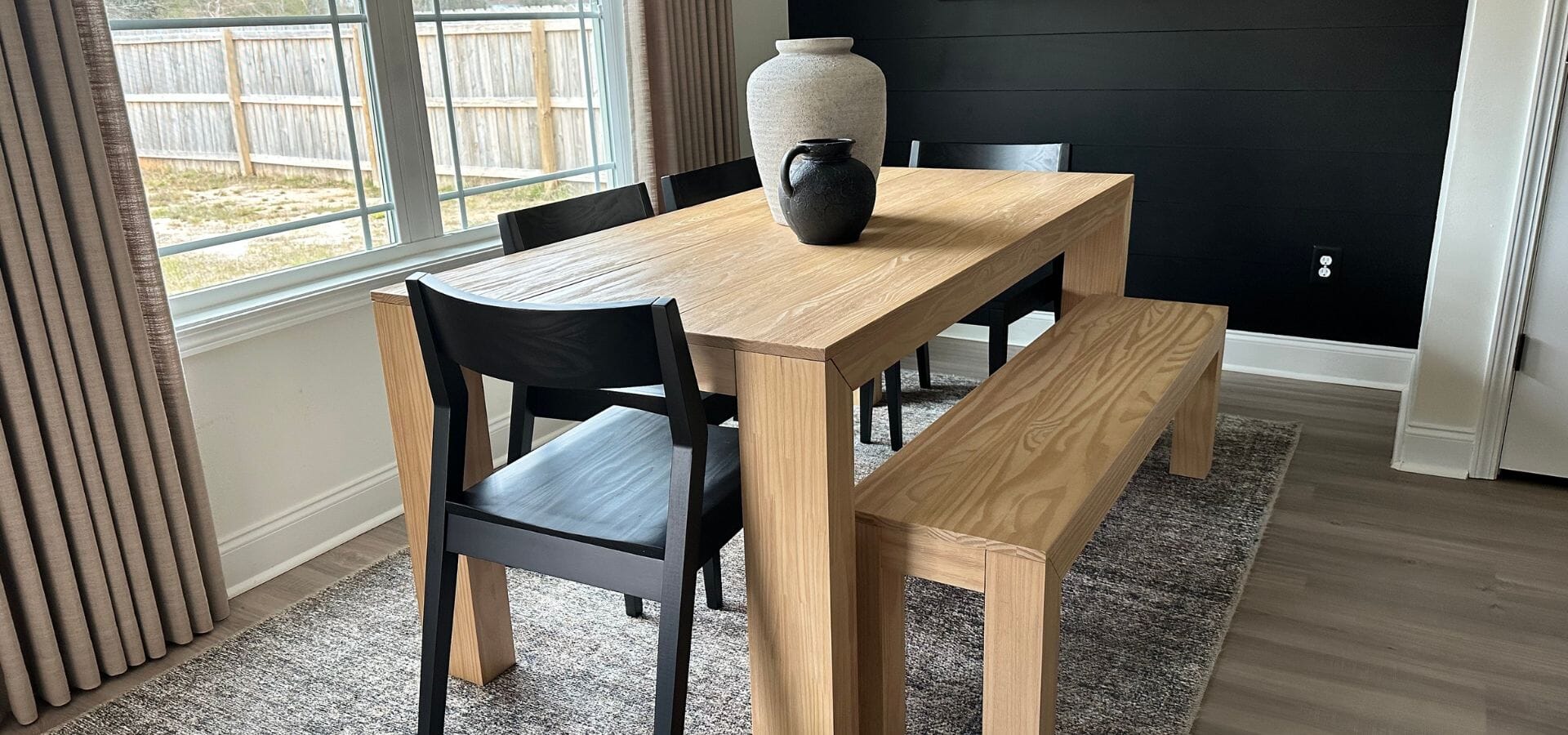Choosing the Right Dining Table Shape and Size for Your Space

Table of Contents
- 1. Introduction
- 2. Understanding Dining Table Shapes
- – Rectangular Tables
- – Square Tables
- – Round Tables
- – Oval Tables
- 3. Size Matters: Determining the Right Dimensions
- 4. Proportionality: Balancing Table Size with Room Dimensions
- 5. Seating Capacity and Arrangement
- 6. Material Considerations for Aesthetic and Functionality
- 7. Versatility and Expandability: Extending Your Options
- 8. Style Considerations: Harmonising with Decor
- 9. Practical Tips for Selecting the Perfect Table
- 10. Case Study: Transforming a Dining Space in a Compact Apartment
- 11. Conclusion
Introduction
The dining table is more than just a piece of furniture; it embodies the spirit of home gatherings, family meals, and social interactions. Choosing the right shape and size for your dining table is essential to ensure functionality, comfort, and aesthetic harmony with your space. Whether you’re hosting grand dinner parties or enjoying a quiet family meal, the shape and size of your dining table can significantly influence your dining experience.
Understanding Dining Table Shapes
The shape of your dining table should complement both your lifestyle needs and the architectural design of your dining area. Here’s an in-depth look at various dining table shapes:
Rectangular Tables
Rectangular tables are the most common choice, often ideal for longer dining rooms. They offer a classic look that’s versatile for both formal and informal settings.
– Advantages:
– Accommodates more people.
– Suitable for narrow spaces.
– Often features extensions for added flexibility.
Square Tables
Square tables provide an intimate dining experience, making them perfect for smaller groups.
– Advantages:
– Creates a cosy setting.
– Perfect for square rooms.
– Encourages conversation among diners.
Round Tables
Round tables are excellent for facilitating conversation, as everyone is equidistant from each other.
– Advantages:
– No sharp corners, safer for small children.
– Ideal for small spaces.
– Can accommodate more people by adding chairs around it.
Oval Tables
Oval tables combine the benefits of rectangular and round tables, offering versatility and style.
– Advantages:
– Softer edges reduce risk of injury.
– Suitable for narrower spaces while providing ample seating.
– Adds elegance to any room design.
Size Matters: Determining the Right Dimensions
Choosing the correct dimensions is crucial to ensure comfort and flow within the room. Here’s how to determine the right size:
– Measure Your Space: Ensure at least three feet of breathing room on all sides of the table to allow easy movement.
– Consider Your Lifestyle: Larger families or those who frequently entertain may need a bigger table.
– Think About Chair Width: Standard chairs require about 22 inches of width per person.
Proportionality: Balancing Table Size with Room Dimensions
Proportionality ensures that your dining table does not overpower or underwhelm your dining space.
– Visual Balance: The table should complement the room’s dimensions without dominating it.
– Ceiling Height Consideration: Higher ceilings can accommodate larger tables without making the space feel cramped.
Seating Capacity and Arrangement
Understanding how many people you need to seat comfortably is vital when choosing a table:
– Standard Guidelines:
– A round table with a diameter of 48 inches seats up to four people comfortably.
– A rectangular table measuring 60 x 36 inches seats up to six people.
– Flexible Seating Options: Benches can provide additional seating without requiring extra space.
Material Considerations for Aesthetic and Functionality
The material of your dining table can affect both its function and style:
– Wood: Offers warmth and durability; suitable for traditional or rustic decor.
– Glass: Creates an illusion of space; perfect for modern or minimalist settings.
– Metal: Provides industrial appeal; durable but can be cold if not paired with softer elements.
Versatility and Expandability: Extending Your Options
For those who need flexibility, extendable tables offer a practical solution:
– Extendable Features:
– Leaf extensions that store within the table itself.
– Drop-leaf designs that save space when not in use.
Style Considerations: Harmonising with Decor
Your dining table should harmonise with existing decor:
– Colour Schemes: Match or contrast the table’s colour with other furniture pieces or wall colours.
– Decorative Elements: Incorporate centrepieces or runners that reflect your personal style while complementing the table’s design.
Practical Tips for Selecting the Perfect Table
Here are some actionable tips to guide you in selecting your ideal dining table:
– Test Before You Buy: Sit at the table to gauge comfort and spacing.
– Consider Maintenance Needs: Choose materials that align with your willingness to maintain them.
– Factor in Future Needs: Plan ahead if you anticipate changes in family size or lifestyle.
Case Study: Transforming a Dining Space in a Compact Apartment
Consider Home Kode’s approach in transforming a compact apartment’s dining area:
1. Challenge: Limited space with a need for functional yet stylish seating.
2. Solution:
– Opted for a round glass table to create an open feel.
– Used sleek metal chairs that tuck neatly under the table when not in use.
3. Outcome:
– Achieved an airy ambiance that maximised seating without overwhelming the room’s dimensions.
By strategically choosing the right shape and size, even compact spaces can become functional and aesthetically pleasing dining areas.
In conclusion, selecting the right dining table shape and size is integral to creating a harmonious living environment that meets both aesthetic desires and practical needs. With careful deliberation on factors like shape, material, size, and style, you can transform any space into an inviting area perfect for gatherings large or small.




